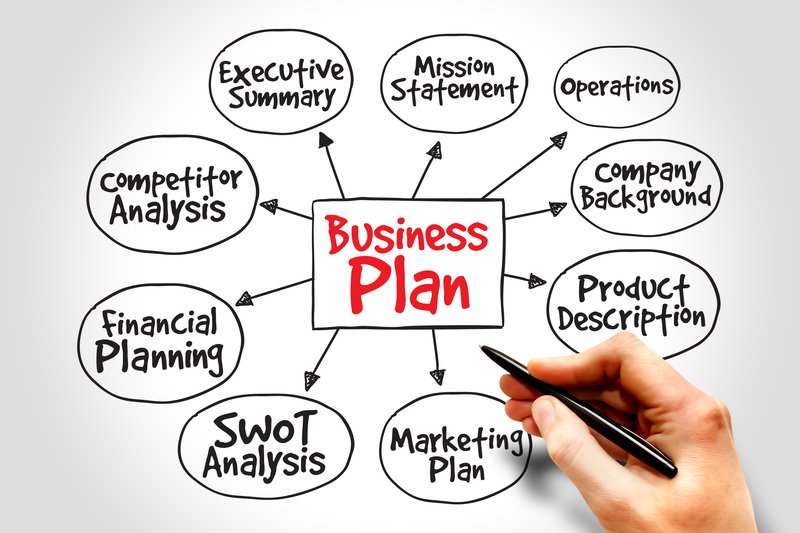Financial reports are standardised measures of a business’s financial health. They are necessary for publicly traded companies, but this does not mean they are only useful for large organisations.
If you know what to look out for, these financial reports are great tools for businesses of all sizes. Robin Booth of Brixx.com, the financial forecasting app, explains the function of the three main financial reports.
Each of the various financial reports in this article takes a different view of the business.
These reports can initially seem intimidating, but you don’t need to be an accountant to understand them. With a little knowledge, you’ll find new ways to look at and analyse your business.
To help you gain fresh insight into your business, I’ll explain the purpose of each financial report and the information it can reveal.
The Big 3 Financial Reports
There are several financial reports that a business owner needs to be aware of. The big three are;
- Income Statement
- Cash Flow and
- Balance Sheet.
There are more specific reports looking at itemised areas of the business such as sales or inventory, but we’ll focus on the big three.
These financial reports can do more than just record what has happened to a business. Any report which looks at past business activity can also be projected into the future to get a sense of where the business is heading. In fact, this is an essential part of financial planning and one of the reasons why financial forecasting is important for startups.
1. Income Statement
The Income Statement (also called the Profi and Loss statement or Income and expenditure Statement) records the business’s incoming revenue and outgoing expenditures, usually monthly.
Key information:
- Operating Profit vs Profit
- Can the business take on new projects?
- Non-cash losses the business is making
Some things you might not consider a loss or expense are included in the Income Statement. Depreciation (the reduction in an asset’s value) is recorded on the Income Statement, as it is considered a loss to the business – an asset the business owns has lost value after all.
Profit is one of the most crucial bits of financial data in an Income Statement. Two kinds of profit are recorded:
Operating Profit
Operating profit records the profit made from the business’s normal operating activities, which will generally be its income from sales minus the cost of goods, services, and salaries.
Operating profit is a very useful measure of a business. It shows how well the business can support itself by its activities alone. For a business heavy in debt, a healthy operating profit might be a sign that the business will be able to work itself free of its debt given time, while a slim or fluctuating operating profit may be a cause for concern.
Operating profit can also be a useful gauge of whether a business is healthy enough to take on investments and new projects.
Profit
Profit adds non-operating income and expenses to the operating profit figure. This gives a full picture of the business’s profit-and loss-generating activities, including investments, interest charged, interest received, and taxation.
Profit not distributed as dividends to shareholders is called the ‘Retained Surplus’ for the period in question. This is the total amount of money that can be ploughed back into the business, and gives a good indication of growth.
2. Cash Flow
The Cash Flow is perhaps the easiest to understand of the ‘big three’, but some subtleties need to be mentioned.
Where the Income Statement describes the state of the business from an accountant’s eye view of what the business owes or is owed at any given time, the Cash Flow is based on when these payments are actually made and received.
Key information:
- Actual cash available to the business
- When payments happen
- Can the business fulfil its financial obligations?
A profitable business may still fall over if it cannot pay its costs on time. Planning the future of your cash flow (forecasting), is a very important part of financial planning. For example, if there’s a chance that the business gets paid late for a major contract, this could mean that it can’t fulfil its obligations, such as paying salaries!
It’s important to take steps to avoid situations where this can happen, which is where the Cash Flow comes in handy.
The Cash Flow Statement is usually divided into three sections, each with its own totals:
Operational Activities
Cash received or spent as part of everyday business activities, including sales, direct costs of selling, operating costs, salaries and interest payments.
Investment Activities
Cash received or spent through investing activities, including the purchase of assets, investments, return on investments, interest received.
Financing Activities
Cash received through debt and debt repayments, including taking out and repaying loans, issuing shares for cash and paying dividends to shareholders.
Splitting out these different kinds of business activities allows them to be viewed in isolation, helping identify where cash flow issues may arise in the business.
3. Balance Sheet
The Balance Sheet shows what the business owns (Assets), what it owes (Liabilities) and how much has been invested into it (Equity).
Key information:
- Value of the business’s assets
- What funds the business, debt or investment?
- How risky is the business for investors?
To ‘balance’ a Balance Sheet, the business should have…
Assets = (Liabilities + Equity)
That’s the accounting bit – but what does a Balance Sheet show us in practice?
Firstly, it shows the value of the business in terms of its assets. It’s worth remembering that assets include any surplus (unspent) cash the business generates.
If an asset, such as an investment, increases in value this is shown on the Balance Sheet. Conversely, if an asset loses value from depreciation, or being sold or written off, this reduction in value is also shown.
The business’ liabilities record what the business owes. If you pay your suppliers immediately then these payments do not need to appear on the balance sheet, but if you owe money, either for goods/services or repayments on a loan, this will be recorded as a liability.
Using the Balance Sheet, you can track your liabilities and hopefully identify ways to reduce them over time. A business with a large ratio of liabilities to assets may be seen as risky as it funds its assets with debt rather than Equity.
The final part of the equation, Equity, is simply the money that has been invested in the business. This could be money that the owner has invested in the business, cash from shares sold in the business, or investments from outside investors.
A business that relies heavily on continuous new investments to fund itself may be in trouble, but a high ratio of equity to liabilities could be an indicator of a strong business, as it is not so reliant on debt to fund itself.
Summary
I hope you have found this a useful introduction to financial reports and what they can tell you about your business.
You get into a great deal of depth and analysis with these and other reports, but the basics I’ve shown here will help you grasp these three key reports and how you can use them to better understand your business and its performance.
This article was written exclusively for ByteStart by Robin Booth of Brixx.com, the financial forecasting app that turns your ideas into numbers.

|
Free Tide Business Bank Account + £50 Cashback!Simply open a free business current account to qualify + 12 months free transactions. Read our Tide review. Open a Tide savings account at the same time and earn an excellent 4.07% AER (variable) on your spare funds. |










